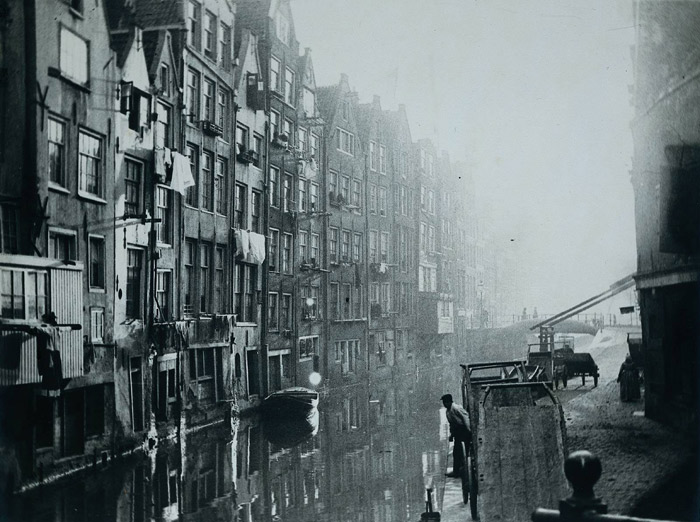Hole in the Clouds
Aug 31, 2009
Breitner-like.
It means weather like what we see in this early twentieth-century photo of Amsterdam by George Hendrik Breitner. Somehow, the laundry and the grainy gray make the Netherlands look less tidy and perfect than we've come to expect.
Breitner's name entered the Dutch vocabulary in reference to a kind of weather--dark, damp, chilly, misty, gloomy--based on his well-known late-ninteenth-century paintings of the Dutch landscape. But in 1996, a drawerful of photos by Breitner (including this one) was discovered in somebody's attic in Amsterdam, and it turns out that the atmosphere in Breitner's photographic landscapes is just as in his paintings. Breitner-like.

landscape
vintage
Europe
Amsterdam
George Hendrik Breitner
via shorpy.com)
(Image credit: George Hendrik Breitner
Jan 15, 2010

On the roof of the little house in the middle of this Amsterdam canal-side scene is a sign that reads "Coffee Shop 36." It's a marijuana shop.
Amsterdam
cityscape
high dynamic range
Netherlands
(Image credit: Trey Ratcliffe)
Nov 11, 2012
 They're asking 7000 Euros in Amsterdam for this trompe l'oeil coat made of wood.
They're asking 7000 Euros in Amsterdam for this trompe l'oeil coat made of wood.
Amsterdam
art
sculpture
trompe l'oeil
coat
(Image credit: Carol Fuchs)
May 3, 2017

Across from the Rijksmuseum in Amsterdam is what we're told is a typical Dutch traffic light, with separate signals for cars and bicycles.
In central Amsterdam, more than 60 percent of all trips are by bike instead of car; in the outer part of the metro area, where road conditions and population density are more like those in the United States, bicycles still account for 40 percent of trips.
This is a new version of an old phenomenon. Before World War II, bicycle travel was commonplace all over the Netherlands, but in the years after the war, transportation planning and road building practices were completely car-oriented, with the result that bike-riding had nearly disappeared by about 1970. Since then, however, heavy investment in bicycle infrastructure, such as protected lanes, as well as policy changes that disfavor automobiles, such as expensive parking, have brought bikes back pretty much everywhere.
In fact, the newest round of transportation infrastructure projects involve structures to handle the crush of bicycles that need parking space.
Amsterdam
streetscape
bicycles
traffic light
(Image credit: C. Fuchs)


 They're asking 7000 Euros in Amsterdam for this trompe l'oeil coat made of wood.
They're asking 7000 Euros in Amsterdam for this trompe l'oeil coat made of wood.